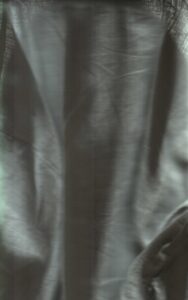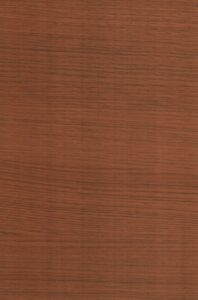
![]()
![]()
![]()










![]()

![]()
![]()



Experimental Capture – Fall 2024
Computational & Expanded ███ography

![]()
![]()
![]()










![]()

![]()
![]()



Yeseul Song’s Two Subtle Bodies (2022) uses bone-conduction headphones and capes with embedded electronics to generate sound compositions that respond dynamically in real time to the movements of two participants in a space. The idea is to allow two individuals co-existing within a space to experience each other’s peripersonal space–which Song describes as extending “the senses of self and others by recognizing and perceiving this soft and fluid space between us” [1]. Song further explains that “[t]he subtle body is a concept that appears in Taoism and Dharmic religions to indicate bodies that are neither solely physical nor solely spiritual, in contrast to the mind-body dualism that has dominated western thought. In neurology, the space surrounding a body is called Peripersonal Space and enabled by visuo-tactile senses” [2].
I actually had the chance to try this project with a friend when Yeseul exhibited it at NYU (see photos)! In terms of how I’d want to use it, I’d be very curious to experiment with this system in the context of butoh/butoh-inspired dance. One of the founders of butoh, Kazuo Ono, once described seeing with his feet and that the body is covered with so many eyes that it’s “virtually impossible to count them all” [3]. How would we perceive/interact with space differently if we had the aid of such a tool? It might also be interesting to modify this tool to perceive non-human bodies.


Here are some links to more information about this work:
[1] Two Subtle Bodies. An essay by Yeseul Song | by More Art | Medium
[2] Two Subtle Bodies – Yeseul Song
[3] Kazuo Ohno’s World: From Without & Within – Google Books

This is actually an ongoing project by a friend (produced as part of The NUUM Collective) that I saw on my Instagram feed. Part of this project shows a stacked series of ultrawide videos showing two people in a room: one is in a fixed position while the other walks forward and stops at various points in space. The visual effect is quite powerful, so I thought I’d reach out to ask about it (capturing the capture?) and find out how it was captured and some background behind its creation. Nun explains:
“This video is about reducing everything to the distance between 2 people, and what meaning can be derived from that… We’re using a positioning system that uses ultra wideband tech to track the position and orientation in space. We’re exploring the different combination[s] and permutations of distance, orientation, and sequencing.” Overall, I’m also drawn to this project for its effective use of small changes within a context of repetition–which is an idea I’ve been trying to explore through my work as well.
Nun further reflected that differences in cultural identity led to different interpretations of how the movements read when the collective examined the footage. Nun mentioned that these were preliminary findings, but that those with more Western influence tended to refer to geometry and the formal relationships (e.g. counterpoint, sequencing) in a way that was more defined/formal, while those with more Eastern influence liked to refer to the relativity over time (for example, frame 2 feeling closer because frame 1 is further) in a way that was more relational and narrative-driven. Nun confirms that they are looking to build a way to more systematically collect such themes that arise.
Finally, it was interesting to note the connection back to this class! Nun said that she’s “personally very influenced by Golan’s teaching. I’ve studied a lot of his materials — specifically these are closely related to the stuff he teaches about interpolation. Getting from point A to point B through different curves.”